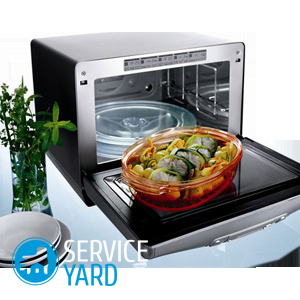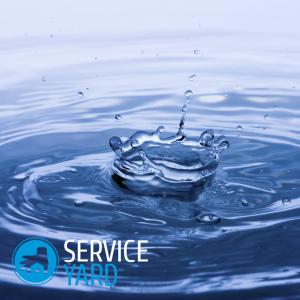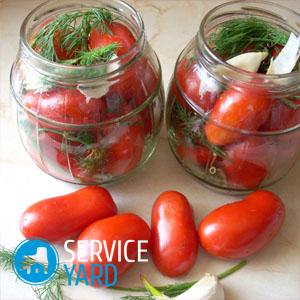Cookware for microwave - glass, plastic and other materials
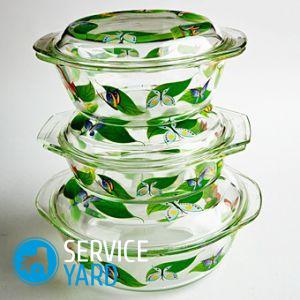
Using a microwave oven, food can be heated in time, less than a minute. Yes, and you can cook the dish faster than traditional methods. It will not be a surprise to anyone that not every dish is suitable for a microwave. Consider what materials you should pay attention to and what to consider when choosing dishes. For example, is such a dish suitable for a microwave - glass, plastic, silicone, ceramics. About all this - below in the text of this article.
to contents ↑Requirements for utensils for microwave ovens
First of all, it must be transparent to microwaves and heat-resistant, it should not contain metals. How is glassware for microwave oven checked?
- We take a thick-walled glass cup without a picture.
- We collect water in it and put it in a checked dish, and then in the oven.
to contents ↑Important! The microwave oven must work at maximum power for at least a minute. Then the water is checked. If the water is hot, and the dishes are not heated, then it can be used in the microwave.
It is impossible to note the boiling of water in bulbs in this case, due to the features of the principle of the device. Therefore, if in the future you plan to use the device for this purpose, read about how to boil water in the microwave.
Invalid content
There are certain restrictions, which are often indicated in the instructions for a particular microwave oven by the manufacturer. But, unfortunately, not every user pays attention to such subtleties. Hence the questions about sparks, why the glass or plate cracked, and so on.
So, categorically can not be used such dishes for the microwave:
- Crystal. It contains lead and silver. In addition, the crystal surface cannot be called homogeneous, therefore, dishes may explode.
- Metal. You can not use even one that is designed for ovens. Despite the fact that such products are resistant to deformation and have low and thin walls, they cannot pass microwave radiation. In the process, they are strongly heated.
- Thin glass. It can not be used. For the manufacture of such utensils, melanin is used. The structure of such a material is light and fragile. If it is exposed to high temperature, cracks may appear. If you are engaged in annual preservation preparations for the winter, use the instructions to speed up the preparatory process outlined in the article "How to sterilize banks in the microwave?".
- Plastic dishes. Plastic is a non-heat resistant material. At elevated temperatures, it deforms and releases toxic products. Exceptions are materials with special labeling.
- Pottery or clay. If a durable glaze is not applied to the surface, use is prohibited. High temperatures lead to cracking and crumbling of containers.
Important! Take special care with utensils containing polyethylene. Under the influence of high temperature, this material melts easily.
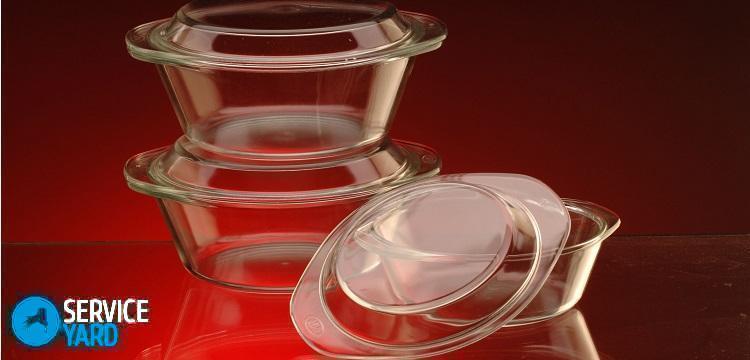
Features of utensils for microwave
To the question, microwave utensils - how to choose, the answer is quite simple.You need to follow some simple recommendations:
- Material, first of all, must be durable. It must not be deformed, cracked, or emit harmful substances under the influence of high temperatures.
- When buying dishes, its throughput is necessarily checked. The best option is a transparent container without patterns.
- The surface of the product, like its material, should not contain metal elements. That is why utensils in which there is gilding, silver or copper patterns cannot be used, since the result will be the appearance of electric discharges in the device.
- Plastic can be used, but only if there is a special mark on the dishes for the microwave. Its location is the bottom or cover.
Important! For designation, alphabetic combinations of PP or RS are used, in addition, a schematically depicted microwave oven is present.
- If there is a lid on the kitchen product, there should be a hole in it for the outlet of hot air.
- Be sure to take into account the shape of the container. It is preferable if it is round, oval or cylindrical. It is worth avoiding dishes with very high sides.
Important! If there are sharp corners in the dishes, you can get a dried out write.
- Be sure to pay attention to size. During operation, cookware should not touch the edges of the device.
- Also consider the features of the cooking mode when choosing dishes. For example, different containers should be used for warming up and for preparing a full-fledged dish in microwave with grill and convection.
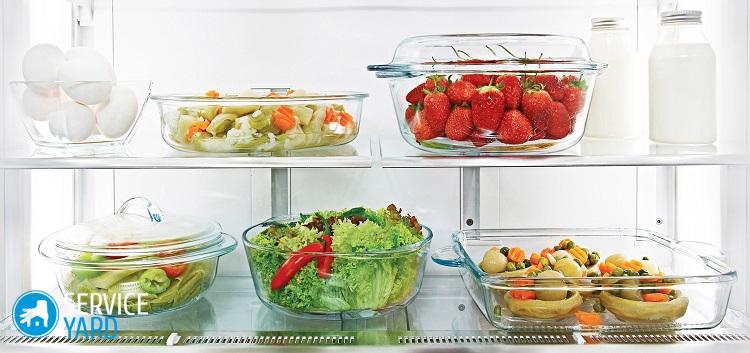
Glass for microwave utensils - benefits
Glass microwave utensils have their indisputable advantages, which is why many housewives prefer it. These benefits are as follows:
- absolute hygiene due to the cleanliness of the glass composition;
- strength;
- ease of maintenance - thanks to perfectly smooth walls it does not need to be scrubbed, it is easy to wash it even without special means;
- durability;
- excellent non-stick properties;
- visual appeal - the finished dishes in such a dish for a microwave can not be shifted, but served directly in this form on the table.
to contents ↑Important! All these advantages in the complex can be appreciated only if a really high class quality dishes.
Alternatives
You can use not only common and familiar materials used for the production of special dishes, but also some other options:
- A special transparent foil or film on the packaging of which indicates that they can be used in the microwave. You can use baking bags if you make several openings in them for the release of hot air and steam.
- Utensils for the manufacture of which a special thin pressed foam is used.
- Thick cardboard or paper. It is important to ensure that there is no wax layer, oil or greasy base on such disposable dishes. At high temperatures, the wax melts and the oil can catch fire.
- Aluminum tanks with low sides. But only if there is a corresponding marking.
- To warm baking, baking or sandwiches, you can use napkins, paper bags or parchment paper.
- A clean cotton or linen cloth is also a good option.
As you can see, glass is not the only dish for a microwave. You can use improvised tools if necessary. It all depends on what exactly and to what extent you are going to cook. And there is room for imagination, because the microwave is essentially universal. For a variety of diets, use our selection the best recipes for microwave.
Disposable tableware
At some points, it is better to use disposable dishes for the microwave. Which one to use?
- To heat the finished food, plastic utensils for microwave use are used, which has a heat-resistant coating.
- For baking meat or vegetables, special plastic bags are used.
- You can warm pastries or sandwiches with a paper bag.
Important! With plastic you need to be very careful. Not every type of it is used in the microwave. You need to be sure that the container is marked with icons that allow its use.
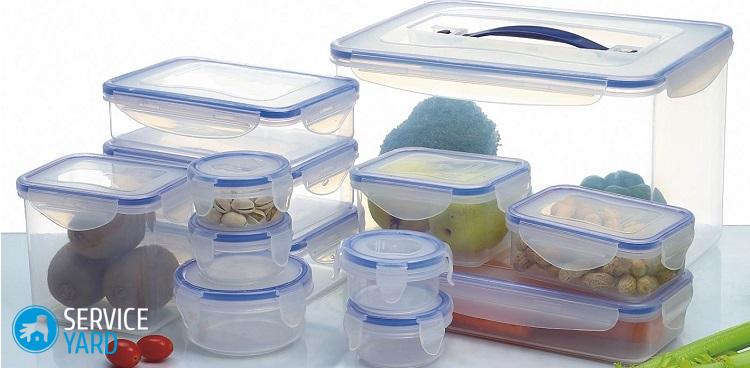
Plastic dishes:
- Do not put plastic in the microwave without special marking. Plastic can simply melt during heating.
- And if the quality of the material is low, then harmful substances are formed that enter the food and atmosphere.
- Do not purchase plastic dishes from an unknown manufacturer. Even with a permit mark, you should not use it. Only trusted, well-known brands acquired in the store inspire confidence.
Important! In microwave ovens, you can use polyamide and polypropylene plastic, it is forbidden to use polystyrene and polyvinyl chloride.
Features of the use of polymers in microwave ovens:
- Plastic should not be used when the grill mode is activated.
- If the dish contains sugar or fat, plastic is categorically not suitable for its preparation. These ingredients easily manage to warm to the temperature of deformation and melting of the plastic.
- It is better not to use polyethylene in microwave ovens. High temperature is not suitable for a thin plastic film - it melts. And when heating a thick film, an unpleasant odor appears, absorbed by the products.
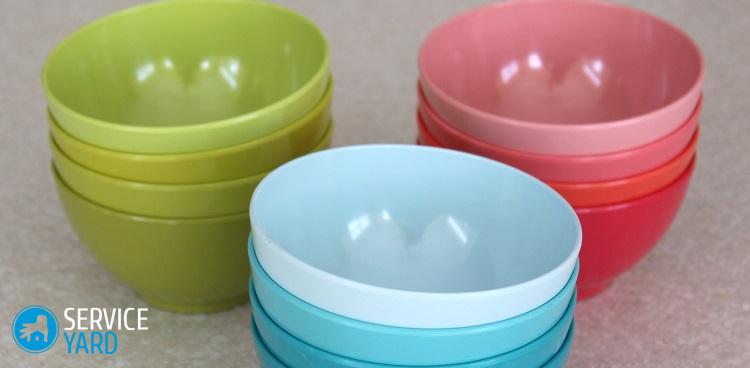
Small secrets of the microwave:
- Different products are cooked unevenly. Microwaves have the ability to penetrate the product by 2-3 cm. To save time, it is better to cut the product in the same small pieces. Their size should not exceed 5 cm.
- When cooking products that have an irregular shape, you need to put the thicker side of the piece to the outer edge of the dishes. Thus, energy will be received in greater quantity.
- To get a delicious golden crust, glass-ceramic dishes are used. At its bottom there is a special compound, heated by microns. First, the dishes are heated in the microwave without products to heat the bottom, and then the ingredients are added there. After the products are covered with a golden brown, the dishes are covered with a lid. But even in this case, you still need to monitor the cleanliness of the camera inside. Here, ways from experienced housewives will help you, with which you can easilywash microwave from fat inside.
Stock footage
That's all the nuances you need to know about utensils for the microwave. The most important thing is to follow the rules, and then the microwave will serve for a long time and delight you with delicious and healthy dishes.




